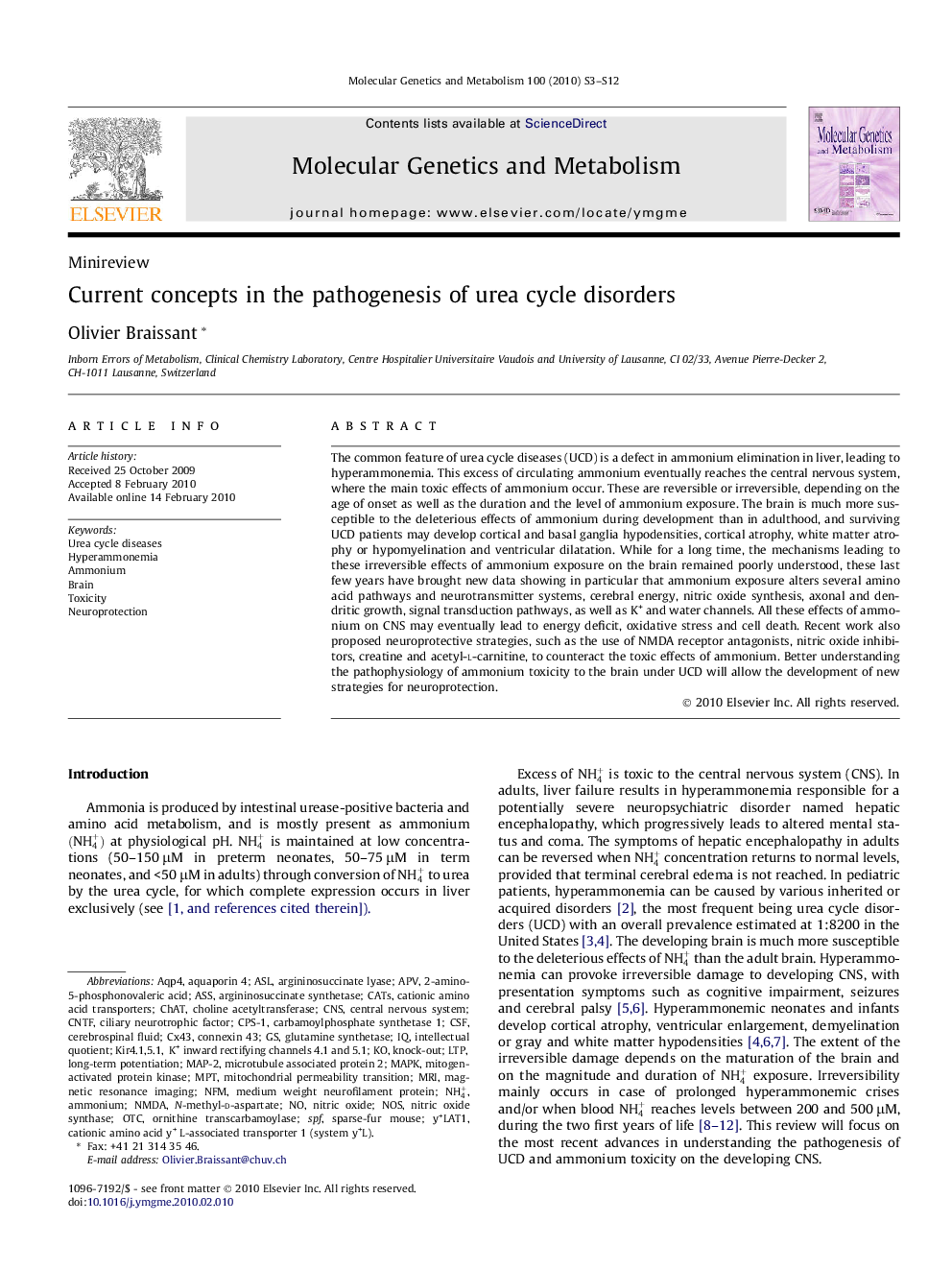| Article ID | Journal | Published Year | Pages | File Type |
|---|---|---|---|---|
| 1999585 | Molecular Genetics and Metabolism | 2010 | 10 Pages |
The common feature of urea cycle diseases (UCD) is a defect in ammonium elimination in liver, leading to hyperammonemia. This excess of circulating ammonium eventually reaches the central nervous system, where the main toxic effects of ammonium occur. These are reversible or irreversible, depending on the age of onset as well as the duration and the level of ammonium exposure. The brain is much more susceptible to the deleterious effects of ammonium during development than in adulthood, and surviving UCD patients may develop cortical and basal ganglia hypodensities, cortical atrophy, white matter atrophy or hypomyelination and ventricular dilatation. While for a long time, the mechanisms leading to these irreversible effects of ammonium exposure on the brain remained poorly understood, these last few years have brought new data showing in particular that ammonium exposure alters several amino acid pathways and neurotransmitter systems, cerebral energy, nitric oxide synthesis, axonal and dendritic growth, signal transduction pathways, as well as K+ and water channels. All these effects of ammonium on CNS may eventually lead to energy deficit, oxidative stress and cell death. Recent work also proposed neuroprotective strategies, such as the use of NMDA receptor antagonists, nitric oxide inhibitors, creatine and acetyl-l-carnitine, to counteract the toxic effects of ammonium. Better understanding the pathophysiology of ammonium toxicity to the brain under UCD will allow the development of new strategies for neuroprotection.
